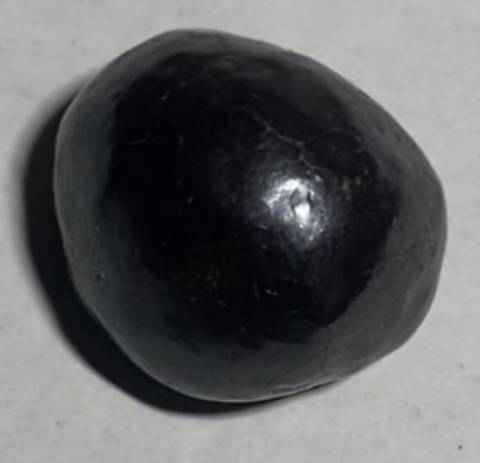|
|
Iscritto: Mar 2004
Posts: 8,262 Mi piace: 3
M Member
|
OP

M Member
Iscritto: Mar 2004
Posts: 8,262 Mi piace: 3 |
Model summary
Single vertical spring represents the compressible subsoil beneath the raft. Eref = 15 MPa (pre‑excavation secant modulus). pref = pre‑excavation overburden at z = hexc + 0.5 m (i.e., γ′·(hexc + 0.5)). Excavation unloads the spring to p1, construction applies the gross foundation pressure Q so p2 = p1 + Q. Stress law E(p) = Eref·(p/pref)n with n = 0.5. Recompression multiplier Kr models stiffer reload branch. Disturbance factor φ reduces baseline stiffness where appropriate.
Governing expressions
- pref = γ′ · (hexc + 0.5)
- p1 = γ′ · 0.5 (post‑excavation confinement at z = h + 0.5; enforce p′min as needed)
- p2 = p1 + Q (gross)
- Eref* = φ · Eref (apply disturbance factor φ, 0.5–1.0)
- Eunloaded = Eref* · (p1/pref)n
- Eloaded = Eref* · (p2/pref)n
- Erecomp = Kr · Eloaded (Kr ≈ 1.0–1.5 to model stiffer reload branch)
Numerical illustration (γ′ = 20 kN/m³, Eref = 15 MPa, n = 0.5, Q = 100 kPa)Common: p1 = 10 kPa (γ′·0.5; enforce p′min = 10 kPa). Choose Kr = 1.2. Two disturbance cases: φ = 1.0 (no disturbance) and φ = 0.7 (30% reduction).
hexc (m) |
pref (kPa) |
p1 (kPa) |
p2 = p1+Q (kPa) |
Eunloaded (MPa)
(φ=1) |
Eloaded (MPa)
(φ=1) |
Erecomp (MPa)
(Kr=1.2) |
|---|
| 3.0 | 70 | 10 | 110 | 5.67 | 18.81 | 22.57 |
| 4.0 | 90 | 10 | 110 | 5.00 | 16.58 | 19.90 |
| 5.0 | 110 | 10 | 110 | 4.52 | 15.00 | 18.00 |
hexc (m) |
Eunloaded (MPa)
(φ=0.7) |
Eloaded (MPa)
(φ=0.7) |
Erecomp (MPa)
(φ=0.7) |
|---|
| 3.0 | 3.97 | 13.17 | 15.80 |
| 4.0 | 3.50 | 11.61 | 13.93 |
| 5.0 | 3.17 | 10.50 | 12.60 |
Physical interpretation (summation of effects)
- Decompression: excavation reduces p → E drops (Eunloaded ≪ Eref).
- Gross re‑confinement: applying the gross load Q raises p to p2 and restores stiffness to Eloaded; if p2>pref Eloaded can exceed Eref.
- Recompression: real soils often reload on a stiffer branch; Kr models this (Erecomp = Kr·Eloaded).
- Disturbance: excavation can reduce Eref (φ<1) and offset recompression benefits.
- Overall: choose Edesign from Eunloaded, Eloaded, Erecomp with conservative choices for φ, Kr, and n; compute settlements with layered methods or distributed springs.
Practical implementation steps
- Measure Eref in situ at zref = h + 0.5 where possible.
- Set pref = γ′·(h + 0.5). Choose φ to reflect expected disturbance (e.g., 1.0, 0.7, 0.5).
- Compute p1 (post‑cut) and p2 (post‑cut + gross Q). Enforce p′min (5–20 kPa) to avoid zero stiffness.
- Compute Eunloaded, Eloaded, and Erecomp (choose n = 0.4–0.6; Kr ≈ 1.0–1.5).
- For settlement use Edesign (best estimate) and run sensitivity cases with reduced φ and Kr.
- Where critical, calibrate φ and Kr with plate tests and use staged FEM for final design.
Critical appraisal and cautionsCritical appraisal and self‑reflectionConceptual strengths- The model captures the primary physics: unloading reduces stiffness; gross loading can re‑constrain and increase stiffness; reloading can be stiffer than virgin loading; disturbance reduces all moduli.
- Using pref tied to the pre‑excavation overburden at the key depth makes Eref empirically meaningful and isolates excavation influence.
- The approach is simple, transparent, and easy to implement for rapid design iterations and sensitivity studies.
Main limitations and cautions- Scalar stress law ignores stress anisotropy and directional stiffness changes; excavation changes horizontal stresses too, and stiffness is tensorial in reality.
- The power‑law scaling and choice of n are empirical; values vary with site, density and testing method — calibrate where possible.
- Recompression multiplier Kr is a crude model of hysteresis; real unloading/reloading behaviour can be nonlinear, path dependent, and irreversible. Kr should be calibrated to unload/reload lab tests or plate tests.
- Disturbance factor φ is also empirical and spatially variable; treating it as uniform risks masking local weak spots.
- Applying gross Q entirely at the shallow evaluation depth is conservative for that depth but may misrepresent vertical load distribution; use influence factors or layered elastic solutions for more realistic load partitioning.
- For cohesive soils the undrained immediate stiffness and pore pressure effects dominate, so this effective‑stress based scaling must be adapted for undrained modulus and short‑term behaviour.
Risk mitigation- Always run sensitivity analyses for φ (e.g., 1.0, 0.7, 0.5) and Kr (1.0–1.5) and for alternative n (0.4–0.6).
- Use layered models (multiple springs) under the raft to capture depth variation and load spreading; calibrate with one or two plate/load tests after excavation if possible.
- Where excavation is large (p1 very small) or q large relative to pref, prefer staged numerical modelling with an unloading/reloading capable constitutive law.
Short recommendations- For preliminary design use the schema above to produce E_unloaded, E_loaded and E_recomp profiles and then perform settlement calculations with conservative and best‑estimate parametric runs.
- For final design calibrate φ and Kr with field tests and perform staged FEM analysis to capture anisotropy, arching and stress path effects.
- Avoid relying on a single scalar modulus; present a band of predicted settlements with clear assumptions about disturbance and recompression.
Ultima modifica di mccoy; 21/09/2025 08:58.
"Data speak for themselves" -Reverend Thomas Bayes 1702-1761
P(Ai|E)=(P(E|Ai)P(Ai))/P(E)
|
|
|
Link Copiato negli Appunti











